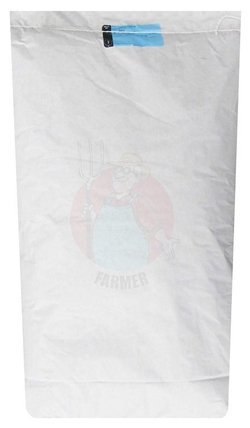- Blue phacelia (Phacelia tanacetifolia), or tansy bundle, is grown as stubble catch crop, for fodder and green manure.
Characteristic
It is an annual plant with a short growing period of 90–110 days depending on weather conditions. Usually it reaches a height of 40–70 cm, although it happens under favorable conditions that it grows up to 1 m. It has interesting, sclerotic, blue, fragrant flowers, attracting bees, hence it is one of the 20 most popular honey-bearing plants. It takes 6-8 weeks to bloom, which is good for pollinators but less useful for growing for seed.
Grown mainly for fodder and green fertilizer, less often for seeds, it is also considered a phytosanitary plant - it reduces the occurrence of beetroot nematode in the soil. Moreover, it is not affected by diseases and pests, because its genus is the only representative of the faceliaceae family - it is not related to any species of cultivated plants.
Cultivation requirements
It has relatively low soil requirements, grows well even on light soils, but gives higher yields on fertile soils, but does not tolerate crusted, heavy and clay soils. It prefers slightly acidic soil or soil with a pH close to neutral, in the range of pH = 5.6–8.5.
When growing phacelia, it is recommended to fertilize (per 1 ha) with 70–100 kg N, 60–80 kg P2O5 and 60–80 kg K2O. We use phosphorus and potassium before sowing, while nitrogen either completely before sowing, or in two equal doses before sowing and after emergence of the plants. The initial growth of phacelia is slow, it is worth remembering that after the second dose of nitrogen it starts to develop rapidly and strongly.
Variations
There are 7 varieties of phacelia in the national register. They are: Anabela, Angelia, Asta, Atara, Lisette, Natra and Stala. They mainly differ in the appearance of seeds, yielding, requirements and purpose of cultivation.
Cultivation - rotation and sowing
A good forecrop for phacelia grown for green fodder or fertilizer is mainly cereals, for those grown for seeds - root crops. By itself it is a good forecrop for most arable crops. Moreover, as mentioned above, it limits the development of the beet nematode in the soil.
Most often cultivated in stubble intercrop after cereals, on rich soils, sown in the amount of 8–10 kg of seeds / ha, and on weaker ones - 10–15 kg / ha. Phacelia can be sown in a row spacing of 11 cm or 20-25 cm, bearing in mind that cultivation in narrower inter-rows will reduce the growth of weeds, while in wider ones it will allow for more convenient care of plants and their growth.
source: www.rynek-rolny.pl










